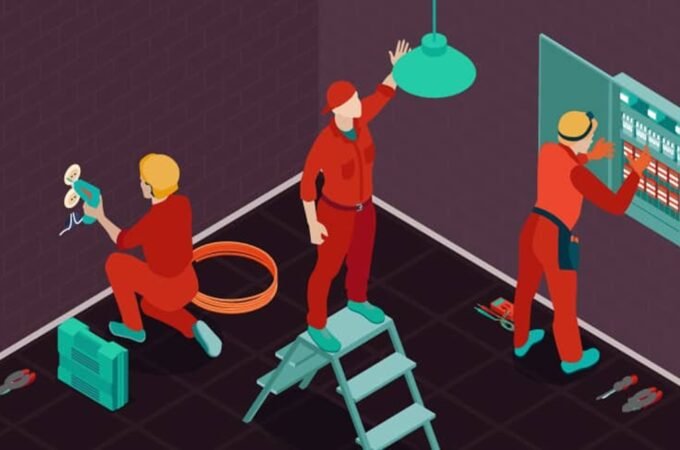
How 3D Interior Rendering Transforms Design Dreams Into Reality
Let’s create a picture that can awaken your feelings through imagination and see how it will help you to create an amazing project that you can show to clients and bring more attention to you.
Imagine how you walk into a room that perfectly encapsulates your vision of a dream home – every detail, every color, and every piece of furniture precisely as you had imagined it. Interior designers strive to create such spaces that not only meet their clients’ expectations but exceed them. However, bringing these visions to life can be a complex process. Work on projects often requires a multifaceted approach, combining artistic vision, technical expertise, and client preferences. That’s where 3D interior rendering services step in, revolutionizing the way designers turn dreams into reality.
Table of Contents
ToggleDesigners’ Challenges while working on a project.
Traditional design methods often rely on two-dimensional blueprints and sketches, which can leave much to the imagination. Explaining ideas to clients becomes challenging, and misunderstandings can lead to dissatisfaction. Moreover, alterations and revisions are time-consuming and can disrupt project timelines.
Herein lies the transformative power of 3D rendering. One of the most significant advantages of 3D visualization in interior design is its ability to bring concepts to life in a perceivably stunning and realistic manner. It bridges the gap between imagination and realization.
Interior design is a creative field where imagination meets practicality, and the ability to visualize concepts is paramount. The introduction of 3D rendering has revolutionized the industry, offering a multitude of benefits that have transformed the way designers approach their projects.
Why 3D Rendering is Bringing Dreams to Life
. First of all renderings – are not just sketches; they are detailed, photorealistic images or animations that provide clients with a clear and vivid picture of the final design. This level of visualization allows clients to step into their envisioned spaces before construction even begins. Clients can “walk through” their future spaces, experiencing them as if they were already built.
. Secondly – communication. Complex design ideas and concepts can be challenging to understand. That’s exactly how 3D rendering acts as a bridge between designers and clients, it’s much easier to communicate with clients allowing them to explore projects as real with all small details, elements, colors, and materials from various angles. This is an open communication process that minimizes misunderstandings and ensures that the final result aligns perfectly with the client’s expectations.
. Last, but not least important – Decision-Making. In interior design, decisions often involve selecting materials, colors, furniture, and various design elements. These choices can be overwhelming for clients, especially when they struggle to envision how different options will come together in their space. 3D rendering simplifies decision-making by enabling designers to create multiple design options quickly. Clients can explore these alternatives in detail, comparing and contrasting choices. This empowers clients to make informed decisions about their design preferences, leading to a more satisfying end result.
Beyond addressing challenges, 3D rendering also fuels creative exploration. Designers can push the boundaries of their creativity, experimenting with various design elements, layouts, and styles in the virtual environment. This freedom to explore different possibilities fosters innovation and allows designers to create truly unique and personalized spaces.
What kind of tools are used in 3D render
As technology continues to advance, the potential of 3D rendering in interior design projects is limitless. Designers can harness their power to push creative boundaries, create unique and personalized spaces, and ultimately deliver exceptional results that exceed their clients’ expectations.
Let’s get deeply into the kind of tools our Freedes studio uses to simplify designers’ conversations with clients using 3D rendering.
1. Real-time rendering technology. This advancement enables designers to instantly see changes in lighting, textures, and materials, fostering a more dynamic and collaborative design process.
2. Photorealism. We use modern 3D rendering can produce images that are almost indistinguishable from photographs.
3. Virtual Reality (VR). Virtual reality is now a powerful tool in the hands of designers. VR allows us to step into a virtual world, experiencing a space before it’s built.
4. Augmented Reality (AR). AR complements the physical world with digital information, making it a valuable tool in design and architecture. With AR, designers can overlay digital models onto real spaces, helping clients visualize how design concepts fit into their existing environments.
5. Sustainable Design. In today’s environmentally conscious world, sustainable design practices are crucial. Our visualizations include selecting eco-friendly materials to optimize energy efficiency.
Tips for Effective Collaboration on the Way to Realizing Dreams in Life
1. Open Communication. Designers and rendering professionals must maintain open, honest, and transparent communication channels. Regular meetings, updates, and feedback sessions help ensure everyone is on the same boat.
2. Clearly Defined Roles and Responsibilities. To avoid confusion and overlap, establish clear roles and responsibilities for each team member.
3. Utilize Collaboration Tools and Software. Use software platforms to share design concepts, feedback, and project updates efficiently.
4. Creative Exchange. Encourage a creative exchange of ideas between designers and rendering professionals. Designers can gain insights into rendering possibilities while rendering professionals can understand the design intent better.
5. Constructive Feedback. Both designers and rendering professionals should be open to receiving and providing feedback, helping to refine the project and achieve the best possible outcome.
6. Maintain Flexibility. Design projects can evolve, and unexpected challenges may arise. Flexibility is key to adapting to changing circumstances while keeping the project on track.
From overcoming the limitations of traditional two-dimensional sketches to facilitating open and transparent communication, 3D rendering has revolutionized the way designers and clients interact with their visions. It empowers clients to explore and experience their dream spaces in a lifelike manner, resulting in more informed decision-making and greater satisfaction. Utilize 3D interior rendering services technology for your projects. Step into the world of limitless creativity and practicality, where your design dreams can become tangible realities. Whether you’re a designer seeking to elevate your work or a client looking to bring your dream space to life, 3D rendering is your partner on this transformative journey. The future of design is here, and it’s waiting for you to explore it.





